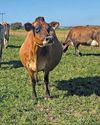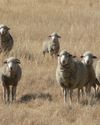Try GOLD - Free
Cassava: a largely ignored crop with huge potential in South Africa
Farmer's Weekly
|Farmer's Weekly 18 November 2022
Light Ngobeni and Zinhle Nkosi, agricultural economists and master's students at the University of Pretoria and the University of Limpopo respectively, write about the importance of cassava production for farmers and consumers in South Africa, and how to develop the value chain.
-

Cassava (Manihot esculenta), also known in some African countries as tapioca, mandioca, yuca or umdumbulu, was domesticated mainly on the south-western rim of the Amazon in South America. In the 16th century, when trade between Brazil and Africa began, Portuguese traders brought the crop to the Congo Basin. Two centuries later, it was introduced independently to East Africa and Madagascar.
Cassava is a root tuber similar to the sweet potato. It is drought-tolerant, grows in poor soil conditions, and requires little to no fertiliser. Cassava has been transformed from a 'poor man's crop' into a lucrative industrial crop, and is now processed into products such as starch, flour and glucose.
For processors, its key attributes are that it contains 70% starch by dry weight and is high in carbohydrates, making it an excellent crop for ethanol for industrial use and feeds for livestock. It is also used in medicine, adhesives and the paper industry.
Smallholder farmers in Africa cultivate and prepare cassava using conventional techniques such as planting cuttings vertically, planting freshly cut cuttings, and using intercropping during the crop's early growth stages with maize, beans and spinach.
The crop is grown and sold largely by resource-constrained farmers in their communities, where it provides much-needed income and employment.
Nigeria is the world's largest cassava producer (see table). While African countries are reported to have contributed 61% of global cassava production in 2018, South Africa is a major importer of cassava starch.

This story is from the Farmer's Weekly 18 November 2022 edition of Farmer's Weekly.
Subscribe to Magzter GOLD to access thousands of curated premium stories, and 10,000+ magazines and newspapers.
Already a subscriber? Sign In
MORE STORIES FROM Farmer's Weekly
Farmer's Weekly
Farmers 'unilateral victims' of climate
Gyeongbuk Provincial Council member Choi Taerim has demanded immediate and substantial support for apple farmers in the South Korean province, urging immediate measures for apple farmers affected by heat damage be implemented, The Asia Business Daily recently reported.
1 min
November 21-28, 2025

Farmer's Weekly
Top agri workers celebrated in the Western Cape
Shannon Robertson, assistant livestock manager at Boschendal near Franschhoek, was crowned the overall winner of the 2025 Western Cape Prestige Agri Awards, held in Durbanville.
1 min
November 21-28, 2025

Farmer's Weekly
Smart dairying: running Jerseys on pasture
The dairy farming sector has seen innovation in milk parlour and cow comfort technology that have allowed farmers to not only yield higher volumes, but extend the productive lifespan of their cows. Albrecht de Jager told Henning Naudé about his approach to maintaining a pasture-raised Jersey herd while utilising precise data measuring technology to ensure quality milk output and optimal cow comfort.
6 mins
November 21-28, 2025

Farmer's Weekly
High-performance dairy farming in the Eastern Cape: the Rufus Dreyer approach
Dairy farming is often described as one of the most technically demanding and strategically complex branches of agriculture.
6 mins
November 21-28, 2025

Farmer's Weekly
Design your stables and camps to assist in AHS control
Keep horses away from areas where disease-carrying midges multiply, like natural pools, lakes, streams and dams, advises Dr Mac.
2 mins
November 21-28, 2025

Farmer's Weekly
The rolling chant that has echoed through SA over the past 30 years
Johan van der Nest is renowned in auction circles and was the first freelance stud-stock auctioneer to begin operating in South Africa.
10 mins
November 21-28, 2025

Farmer's Weekly
Flight from the Red Army
The fall of the Third Reich in 1945 was defined by the Red Army's brutal invasion of Germany. Mike Burgess tells how the Hoppe family trekked from Finowfurt near Berlin to Preetz in Schleswig-Holstein to escape the brutality.
6 mins
November 21-28, 2025

Farmer's Weekly
How to plan a pre-sale feeding programme
Proper feeding of animals before a sale can help producers catch the eye of buyers and increase profits, but it is important to choose the right ration.
8 mins
November 21-28, 2025

Farmer's Weekly
How women are transforming coffee production in Kenya
A group of Kenyan smallholder women farmers are transforming the country's high-value coffee sector by pooling their resources.
5 mins
November 21-28, 2025

Farmer's Weekly
Tough times ahead for SA's grain farmers
Grain farmers face a difficult year ahead with lower grain prices and high production costs
3 mins
November 21-28, 2025
Translate
Change font size
